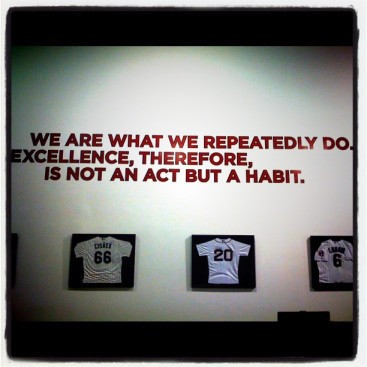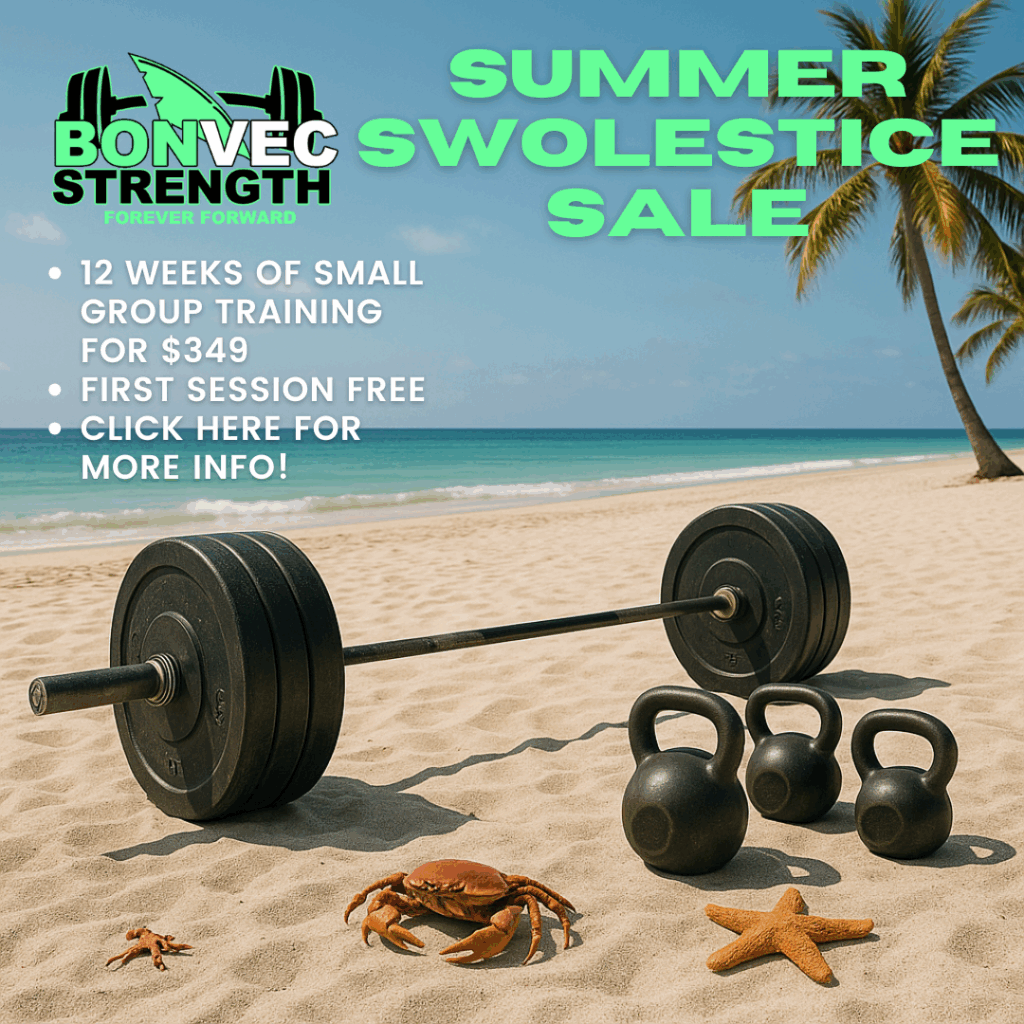
What a wild weekend. Seventy-two hours of lifting, learning, friends and hurricanes. Minus watching the damage inflicted by Hurricane Sandy from afar, the past three days have been amazing and I’m about to tell you why.
On Sunday, I attended the Cressey Performance Fall Seminar in Hudson, Mass. For those of you who read my blog, you know who Eric Cressey is and why Cressey Performance is the mecca of strength and conditioning for baseball players. So this weekend, about 200 strength coaches, physical therapists, athletes and fitness enthusiasts piled into the brand new 15,000-square-foot facility to hear presentations from some of the brightest minds in the business.

After lifting with my old friend and college baseball teammate Pete in the Bryant University varsity weight room on Friday and crushing deadlifts with CP intern Miguel on Saturday, I was ready to get my learn on. (A quick side note: Miguel is one of the hardest-working, most passionate dudes I know. He’s gonna be a star someday, so check out his blog so you can say you knew about him before he took over the world.)
The lineup did not disappoint. Here’s my quick review of a few of the speakers and their topics.
Eric Cressey – Managing Congenital Laxity in Throwing Athletes

Baseball players (and more broadly, throwing athletes) are extremely unique in their strength and conditioning needs. Combine loosey-goosey shoulder joints with constant overuse and the most violent movement in all of sports and you’ve got a lot more to worry about than just sets and reps.
Eric discussed how to spot laxity in a baseball player as well as a few quick screens to determine how to proceed to exercise prescription. He noted how mobility and flexibility work also needs to be individualized for the athlete just like a lifting program. As a matter of fact, the more mobile someone already is, the more careful you have to be with your selection of mobility drills and stretches (if you even need them) with that athlete.
Take-home points from Eric’s presentation:
- Certain joints need mobility (hips, t-spine, ankles)
- Certain joints need stability (lumbar spine, knees)
- The difference between “stiff” muscles (e.g. stable and strong) and “short” muscles (e.g. immobile and weak)
- In athletes with laxity, better to create stiffness at adjacent joints than to stretch the hell out of tight muscles (example: strengthen glutes and abs to relieve tension on hips and hamstrings)
- ALWAYS assess EVERYONE – “If you’re not assessing, you’re guessing!”
Brian St. Pierre – Food Freak Show: What Will You Be Eating into the 21 Century?

A former coach at CP and now a nutrition expert for Precision Nutrition, Brian gave an eye-opening talk about some of the up-and-coming food trends that we as coaches and trainers need to know about. These innovative and somewhat stunning advancements in nutrition go beyond the health and food choices of our clients. There are some changes in the works that could change the way the entire world eats.
As a food and nutrition “insider,” Brian has a heads-up on what’s coming next, and what’s coming is a flood of added omega-3’s to literally everything. We’re talking ice cream and hot dogs that are going to be marketed as health food in a desperate attempt to feed our perpetually omega-3 deficient bodies. Along with the growing popularity of “exotic” antioxidants and fortified food products, it’s going to be extremely important for coaches and trainers to help people sift through the propaganda and make healthy eating choices.
Brian hit us with some dramatic facts about sustainability and our decreasing ability to keep up with the food demands of our planet. It takes some cojones to step up in front of a room full of grass-fed-beef-loving, GMO-shunning meatheads and proclaim that livestock are literally decimating the Earth’s resources, but his facts were rock solid. I was especially impressed by his rational view on GMOs and how they could potentially save hundreds of thousands of lives in developing countries. While many of us get up on our soapboxes and damn GMOs to hell for being “unnatural,” Brian put it all into perspective.
Perhaps the most provocative question of the day: why are we still so vehemently against GMOs when people in Africa are dying by the thousands from Vitamin A deficiency and genetically engineered crops could save their lives?
Take-home points from Brian’s presentation:
- Our job as coaches is to educate our clients to make sound nutritional choices
- We’ve been “genetically engineering” crops for thousands of years – the practice itself is not inherently evil
- GMOs could save lives worldwide and ease the strain of feeding 9 billion people by 2050
- Fortified foods are not necessarily healthy foods
- When making dietary changes, opt for one small change at a time instead of a bunch of big ones: “Make changes so small that your client cannot fail.”
Chris Howard – Program Design Considerations for the Young Athlete

This was the most understated – but arguably most important – presentation of the entire seminar. Everyone always says they want to work with “elite athletes,” but Chris hammered home the point that helping a kid make the varsity football team, overcome the awkwardness of puberty or build self-confidence can make a positive impact that carries far beyond athletics.
First, Chris crushed the superstition that lifting is bad for kids with simple logic: if kids are mature enough for organized sports, they’re mature enough for strength training. Next, he outlined a simple plan for introducing kids to new exercises and how to make overly-technical movements (like deadlifts, lunges, etc.) less overwhelming for rookie lifters.
Finally, he presented an extremely thorough list of regressions/progressions for go-to exercises to use with young athletes. To me, this might have been the most valuable and immediately-applicable info of the entire day.
Take-home points from Chris’s presentation:
- We’re more than just strength coaches – we need to be teachers, mentors and role models
- Be patient
- Take it slow – not everyone is ready to trap bar deadlift the first day (or even the first six months)
- Teaching self-confidence is far more important than improving any physical quality
Greg Robins – How Strong Does an Athlete Need to Be?

Greg stressed that building “maximal” strength (e.g. the most weight you can move on the bar) is just one piece of the puzzle. You have to place emphasis on “relative” strength (max strength in relation to body weight), “explosive” strength (generating a lot of force quickly), mobility and endurance as well. The specific emphasis on these qualities is, of course, dictated by the demands of the athlete’s sport.
Interestingly, Greg noted that sport-specific skill is far more important than strength and conditioning in determining an athlete’s success. This seems like a no-brainer, but as coaches we often forget that there are countless athletes that reach elite status WITHOUT strength training (Tim Lincecum was a recurring example). This led to an important take-away point: all strength and conditioning is just general physical preparation, and no one absolutely needs it. Does it help? Of course. But is it more important to an athlete than actually being good at their sport? No way.
I’ve already applied some of these ideas to my athletes by reducing the amount of strength work in the 3-5 rep range. I’m recommending more sets in the 6-8 rep range for a few reasons: 1) newbie lifters can make strength gains with as little as 40 percent of 1-rep max 2) the optimal range for training rate of force development is 50-70 percent of 1RM (and 6-8 reps falls into that range) and 3) it’s a whole lot safer.
Take-home points from Greg’s presentation:
- Strive for balance of all types of strength
- Athletes aren’t powerlifters, bodybuilders or Olympic lifters so don’t train them that way
- Weight on the bar isn’t the be-all, end-all
- Never let strength and conditioning detract from sport practice or competition
- As a coach, keep your ego in check because athletes don’t NEED you
Tony Gentilcore – Deep Squats: Are They Worth It?
I was anxious to hear Tony speak for a few reasons. First, people named Tony tend to be really smart (and handsome). Secondly, Tony is funny as hell and if you don’t read his blog, you should. And lastly, I love squats. A lot. I recently hit a major squat milestone, so they hold a special place in my heart.
But Tony made the point that a proper squat requires more pre-requisites than just about any other exercise. A properly-executed squat is hard to beat in terms of athletic development, but a properly-executed squat is hardly ever seen in the average gym-going population or athletic population alike.
Tony presented assessment, regression and progression ideas for squatting. He also touched upon ways to modify the squat to make it safer and more effective for people who weren’t born to squat (long legs, short torsos). I hope Tony’s presentation opened up a lot of eyes to the idea that not everyone has to squat to get stronger/more athletic.
Take-home points from Tony’s presentation:
- Not everyone can/should squat
- Not everyone should squat deep (gasp!)
- Athletes need to “prove to you that they’re ready to squat” via adequate mobility/stability
- If you can’t squat, there are plenty of other options (deadlifts, single leg work, etc.)
- If you can’t squat properly, don’t force it!
Ridin’ the Storm Out
After the seminar, I ran home to Vermont to escape Hurricane Sandy. I’m less than excited to go back to Long Island and see the destruction of my small coastal town, so my thoughts and prayers go out to everyone who’s been impacted by the storm.
As always, there’s a silver lining. I got to spend lots of time with old friends, new friends, and family. I got to lift weights at some really cool places with some really cool people. And I’ve had plenty of time to reflect upon what I learned at the seminar.
In conclusion, you’d be hard pressed to find more brilliant minds in one place than at the Cressey Performance Fall Seminar. If you’re a strength coach, athlete or fitness enthusiast, I highly recommend you check out CP – whether it’s for a future seminar, observation opportunity or off-season training destination. I always leave Hudson as a better coach and I can’t wait to go back.


Best of luck on your return home, Tony. It’s always great catching up with you.
Pingback: Training Update – One Week Out… | TONY BONVECHIO
Pingback: Talking Shop: Video Interview with Tony Gentilcore | Harold Gibbons